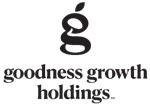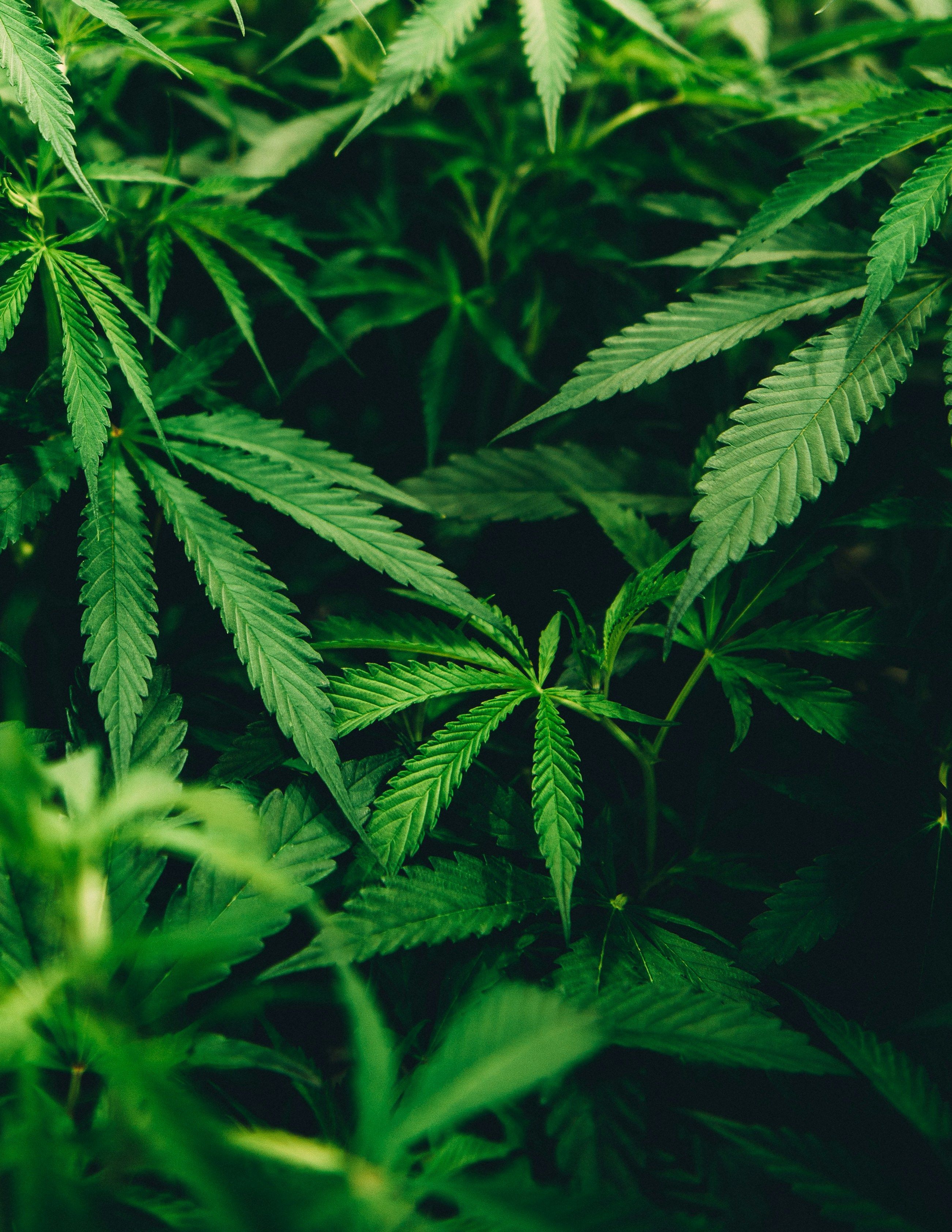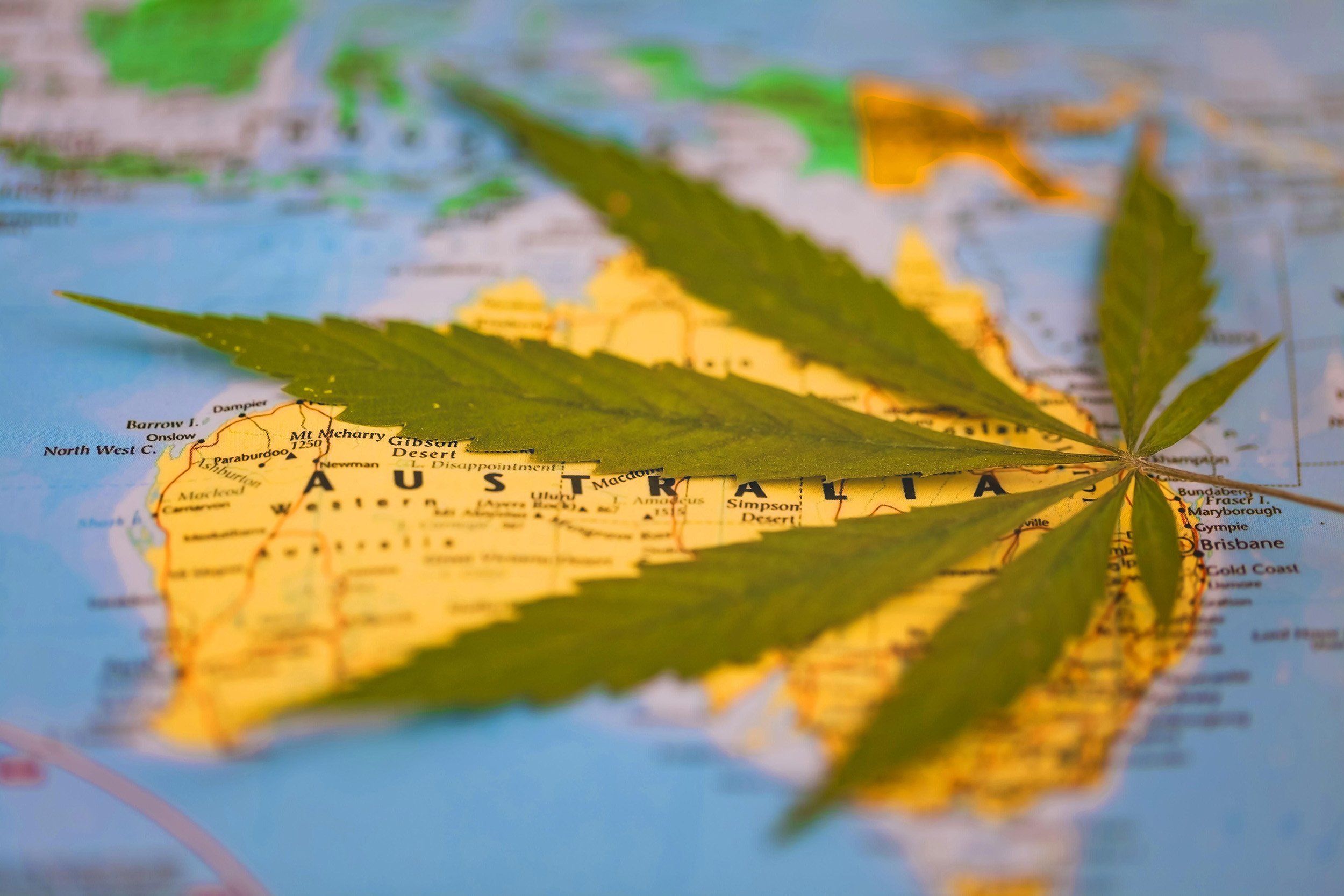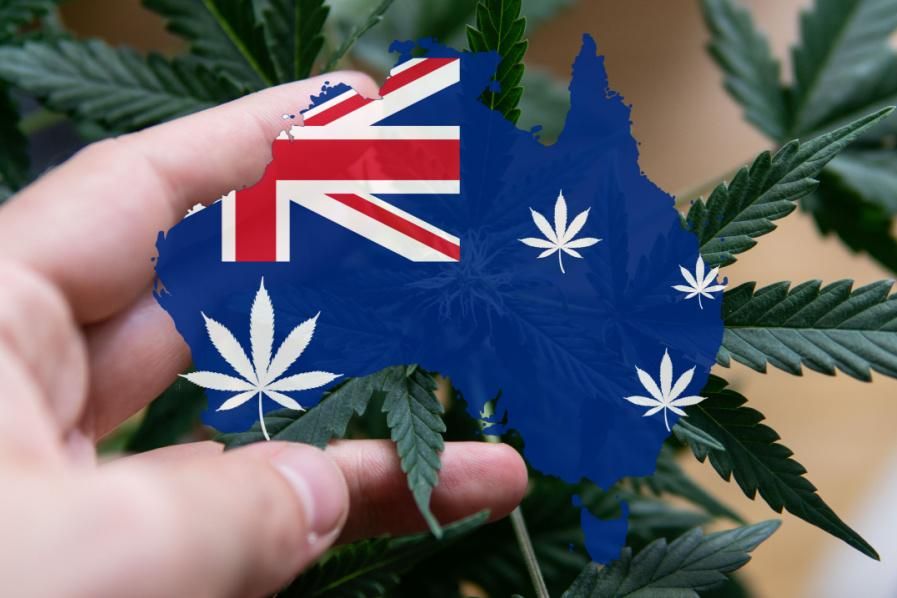Company demonstrates improved performance with record revenue and operating income in fiscal year 2023 –
– Q4 2023 revenue of $24.2 million excluding discontinued operations increased 34.4% year-over-year –
– Q4 2023 operating income of $5.4 million, the second consecutive quarter above $5 million –
MINNEAPOLIS, April 01, 2024 (GLOBE NEWSWIRE) -- Goodness Growth Holdings, Inc. ("Goodness Growth" or the "Company") (CSE: GDNS; OTCQX: GDNSF), a cannabis company committed to providing safe access, quality products and great value to its customers, today reported financial results for its fourth quarter and full year ended December 31, 2023. Key financial results are presented below in summary form with supporting commentary and discussion from management of certain key operating metrics which the Company uses to judge its performance. All currency figures referenced herein are denominated in U.S. dollars.
| Summary of Key Financial Metrics | |||||||||||
| Three Months Ended | Year Ended | ||||||||||
| US $ in millions | December 31, | December 31, | |||||||||
| 2023 | 2022 | Variance | 2023 | 2022 | Variance | ||||||
| GAAP Revenue | $24.2 | $19.0 | 26.9% | $88.1 | $74.6 | 18.1% | |||||
| Revenue (excluding discontinued operations) | $24.2 | $18.0 | 34.4% | $86.1 | $66.2 | 30.1% | |||||
| GAAP Gross Profit | $12.1 | $8.5 | 41.6% | $44.1 | $30.9 | 42.7% | |||||
| Gross Profit Margin | 49.9 % | 44.7 % | 520 bps | 50.0 % | 41.4 % | 860 bps | |||||
| SG&A Expenses | $6.3 | $7.4 | -15.9% | $28.2 | $33.8 | -16.6% | |||||
| SG&A Expenses (% of Sales) | 25.9 % | 39.0 % | 1320 bps | 32.0 % | 45.3 % | 1330 bps | |||||
| Operating Income (Loss) | $5.4 | $0.7 | 666.9% | $10.6 | ($6.9) | NM | |||||
| Operating Income Margin | 22.3 % | 3.7 % | 1860 bps | 12.0 % | -9.3% | 2130 bps | |||||
| EBITDA | $5.7 | $0.8 | 586.7% | $17.0 | ($10.0) | NM | |||||
| EBITDA Margin | 23.7 % | 4.4 % | 1930 bps | 19.3 % | (13.3 %) | 3270 bps | |||||
| NM = Not Meaningful | |||||||||||
Management Commentary
Interim Chief Executive Officer Josh Rosen commented, "2023 was a transformational year for our Company, and our teams did an excellent job executing our CREAM & Fire strategy to deliver significant improvements in operating and financial performance. We delivered continual improvement in revenue, gross margin, and operating profit throughout the course of 2023. We're entering 2024 in a much stronger position because of these improvements and our team is poised to capitalize on what I believe is an attractive platform for growth. As I have stated in the past, de-risking our balance sheet was another critical focus for us over the past year, and our announcement this afternoon to divest our New York assets helps position us for an exciting year in 2024."
Amber Shimpa, President and CEO of Vireo Health of Minnesota commented, "Our operational key performance indicators continued to show strong improvements both during the fourth quarter and over the past twelve months. We remain especially pleased with the progress we've made with our focus on decentralized operations during the year, allowing our local teams and support from partners like Grown Rogue to help drive decision making for improved product quality and fundamental performance. We believe our continued market outperformance in Maryland's recently-launched adult-use market demonstrates that we are ready to compete effectively in adult-use cannabis markets, and we are looking forward to the launch of adult-use sales in Minnesota in 2025. We expect to provide additional updates surrounding our initiatives to ensure a successful adult-use launch in Minnesota in the coming quarters."
| Core Market KPIs 1 | |||||||||||
| Three Months Ended | Year Ended | ||||||||||
| US $ in millions | December 31, | December 31, | |||||||||
| 2023 | 2022 | Variance | 2023 | 2022 | Variance | ||||||
| Total Flower Harvested (lbs) | 4,108 | 2,669 | 53.9% | 14,267 | 8,279 | 72.3% | |||||
| % "A" Flower 2 | 43.0 % | 40.8 % | 220 bps | 48.5 % | 34.6 % | 1390 bps | |||||
| Total Retail Revenue | $19.9 | $15.2 | 30.4% | $71.7 | $56.1 | 27.8% | |||||
| Same Store Sales Growth | - | - | 30.4% | - | - | 27.8% | |||||
| Minnesota | - | - | 5.3 % | - | - | 20.6 % | |||||
| New York | - | - | -15.9% | - | - | -16.5% | |||||
| Maryland | - | - | 210.1 % | - | - | 121.2 % | |||||
| Total Wholesale Revenue | $4.3 | $2.8 | 56.5% | $14.4 | $9.5 | 52.6% | |||||
| 1 Core Markets refer to the Company's operations in Maryland, Minnesota, and New York. | |||||||||||
| 2 "A Flower" refers to produced biomass that meet the Company's highest internal standards for flower quality, size, and appearance. | |||||||||||
Other Events
On April 1, 2024, the Company executed an eighth amendment to its lease with its landlord, Innovative Industrial Properties, on its cannabis cultivation and manufacturing facilities located in Johnstown, New York. The eighth amendment to the Johnstown lease extends a lease termination option until June 30, 2024, and adds a purchase option of the facility for the tenant.
On April 1, 2024, the Company announced that it has executed a binding term sheet with ACE Venture Enterprises, Inc. ("Ace"), whereby Ace will acquire Goodness Growth Holdings subsidiary, Vireo Health of New York, pending regulatory approval. Terms of the transaction include a purchase price between $3.0 and $5.0 million for Vireo Health of New York's licenses, inventory and assets, an investment of $20.0 million from Ace for the development of the Johnstown, NY cannabis cultivation and manufacturing campus, and Ace's assumption of the Johnstown lease agreement with Innovative Industrial Properties. The parties also committed to a collaborative advisory agreement that retains Goodness Growth's management and compliance oversight in return for an approximate 15 percent share of net profits.
Balance Sheet and Liquidity
As of December 31, 2023, total current assets were $148.9 million, including cash on hand of $16.0 million. Total current liabilities were $179.5 million, including $88.3 million in liabilities held for sale related to the Company's businesses in the State of New York. As of December 31, 2023, the Company had a total of 232,799,343 shares outstanding on the treasury method basis.
Josh Rosen concluded, "While we await the closing of our pending transaction to divest our New York operations, we currently remain out of compliance with the covenants in our credit agreement. We are in the midst of ongoing, productive conversations with our secured lender, Chicago Atlantic to extend our credit agreement and remain committed to divesting New York. We expect to secure this extension within the next 30 days."
Conference Call and Webcast Information
Goodness Growth management will host a conference call with research analysts today, April 1, 2024, at 4:30 p.m. ET (3:30 p.m. CT) to discuss its financial results for its fourth quarter and full year ended December 31, 2023. Interested parties may attend the conference call by dialing 1-800-715-9871 (Toll-Free) (US and Canada) or 1-646-307-1963 (Toll) (International) and referencing conference ID number 3718174.
A live audio webcast of this event will also be available in the Events & Presentations section of the Company's Investor Relations website and via the following link:
https://events.q4inc.com/attendee/669854452 .
About Goodness Growth Holdings, Inc.
Goodness Growth Holdings, Inc. is a cannabis company whose mission is to provide safe access, quality products and value to its customers while supporting its local communities through active participation and restorative justice programs. The Company is evolving with the industry and is in the midst of a transformation to being significantly more customer-centric across its operations, which include cultivation, manufacturing, wholesale and retail business lines. Today, the Company is licensed to grow, process, and/or distribute cannabis in four markets and operates 14 dispensaries in three states. For more information about Goodness Growth Holdings, please visit www.goodnessgrowth.com .
Additional Information
Additional information relating to the Company's fourth quarter and full year 2023 results will be available on EDGAR and SEDAR later today. Goodness Growth refers to certain non-GAAP financial measures such as Earnings Before Interest, Taxes, Depreciation and Amortization (EBITDA) in circumstances in which the Company believes that doing so provides additional perspective and insights when analyzing the core operating performance of the business. These measures do not have any standardized meaning and may not be comparable to similar measures presented by other issuers. Please see the Supplemental Information and Reconciliation of Non-GAAP Financial Measures at the end of this news release for more detailed information regarding non-GAAP financial measures.
Contact Information
| Investor Inquiries: Sam Gibbons Managing Director sam.gibbons@alpha-ir.com (612) 314-8995 | Media Inquiries: Amanda Hutcheson Senior Manager, Communications amandahutcheson@goodnessgrowth.com (919) 815-1476 |
Forward-Looking Statement Disclosure
This press release contains "forward-looking information" within the meaning of applicable United States and Canadian securities legislation. To the extent any forward-looking information in this press release constitutes "financial outlooks" within the meaning of applicable United States or Canadian securities laws, this information is being provided as preliminary financial results; the reader is cautioned that this information may not be appropriate for any other purpose and the reader should not place undue reliance on such financial outlooks. Forward-looking information contained in this press release may be identified by the use of words such as "should," "believe," "estimate," "would," "looking forward," "may," "continue," "expect," "expected," "will," "likely," "subject to," "transformation," and "pending," variations of such words and phrases, or any statements or clauses containing verbs in any future tense. These statements should not be read as guarantees of future performance or results. Forward-looking information includes both known and unknown risks, uncertainties, and other factors which may cause the actual results, performance, or achievements of the Company or its subsidiaries to be materially different from any future results, performance, or achievements expressed or implied by the forward-looking statements or information contained in this press release. Financial outlooks, as with forward-looking information generally, are, without limitation, based on the assumptions and subject to various risks as set out herein and in our Annual Report on Form 10-K filed with the Securities Exchange Commission. Our actual financial position and results of operations may differ materially from management's current expectations and, as a result, our revenue, EBITDA, and cash on hand may differ materially from the values provided in this press release. Forward-looking information is based upon a number of estimates and assumptions of management, believed but not certain to be reasonable, in light of management's experience and perception of trends, current conditions, and expected developments, as well as other factors relevant in the circumstances, including assumptions in respect of current and future market conditions, the current and future regulatory environment, and the availability of licenses, approvals and permits.
Although the Company believes that the expectations and assumptions on which such forward-looking information is based are reasonable, the reader should not place undue reliance on the forward-looking information because the Company can give no assurance that they will prove to be correct. Actual results and developments may differ materially from those contemplated by these statements. Forward-looking information is subject to a variety of risks and uncertainties that could cause actual events or results to differ materially from those projected in the forward-looking information. Such risks and uncertainties include, but are not limited to: risks related to the timing and content of adult-use legislation in markets where the Company currently operates; current and future market conditions, including the market price of the subordinate voting shares of the Company; risks related to epidemics and pandemics; federal, state, local, and foreign government laws, rules, and regulations, including federal and state laws and regulations in the United States relating to cannabis operations in the United States and any changes to such laws or regulations; operational, regulatory and other risks; execution of business strategy; management of growth; difficulties inherent in forecasting future events; conflicts of interest; risks inherent in an agricultural business; risks inherent in a manufacturing business; liquidity and the ability of the Company to raise additional financing to continue as a going concern; the Company's ability to meet the demand for flower in Minnesota; risk of failure in the lawsuit with Verano and the cost of that litigation; our ability to dispose of our assets held for sale at an acceptable price or at all; and risk factors set out in the Company's Form 10-K for the year ended December 31, 2023, which will be available later today on EDGAR with the U.S. Securities and Exchange Commission and filed with the Canadian securities regulators and available under the Company's profile on SEDAR at www.sedar.com .
The statements in this press release are made as of the date of this release. Except as required by law, we undertake no obligation to update any forward-looking statements or forward-looking information to reflect events or circumstances after the date of such statements.
Supplemental Information
The financial information reported in this news release is based on audited financial statements for the fiscal quarter and year ended December 31, 2023, and December 31, 2022. All financial information contained in this news release is qualified in its entirety with reference to such financial statements. To the extent that the financial information contained in this news release is inconsistent with the information contained in the Company's audited financial statements, the financial information contained in this news release shall be deemed to be modified or superseded by the Company's audited financial statements. The making of a modifying or superseding statement shall not be deemed an admission for any purposes that the modified or superseded statement, when made, constituted a misrepresentation for purposes of applicable securities laws.
| GOODNESS GROWTH HOLDINGS, INC. | |||||||
| CONSOLIDATED BALANCE SHEETS AS OF 12/31/2023 AND 12/31/2022 | |||||||
| (Amounts Expressed in United States Dollars, Audited and Condensed) | |||||||
| December 31, | December 31, | ||||||
| 2023 | 2022 | ||||||
| Assets | |||||||
| Current assets: | |||||||
| Cash | $ | 15,964,665 | $ | 15,149,333 | |||
| Accounts receivable, net of allowance for doubtful accounts of $254,961 and $453,860, respectively | 3,086,640 | 4,286,072 | |||||
| Income tax receivable | 12,278,119 | — | |||||
| Inventory | 19,285,870 | 20,508,023 | |||||
| Prepayments and other current assets | 1,336,234 | 2,544,532 | |||||
| Notes receivable, current | 3,750,000 | — | |||||
| Warrants held | 1,937,352 | — | |||||
| Assets Held for Sale | 91,213,271 | 4,240,781 | |||||
| Total current assets | 148,852,151 | 46,728,741 | |||||
| Property and equipment, net | 23,291,183 | 89,606,932 | |||||
| Operating lease, right-of-use asset | 2,018,163 | 6,110,787 | |||||
| Notes receivable, long-term | — | 3,750,000 | |||||
| Intangible assets, net | 8,718,577 | 8,776,946 | |||||
| Goodwill | — | 183,836 | |||||
| Deposits | 383,645 | 2,312,161 | |||||
| Deferred tax assets | — | 1,687,000 | |||||
| Total assets | $ | 183,263,719 | $ | 159,156,403 | |||
| Liabilities | |||||||
| Current liabilities | |||||||
| Accounts Payable and Accrued liabilities | $ | 7,674,389 | $ | 14,928,780 | |||
| Long-Term debt, current portion | 60,220,535 | 11,780,000 | |||||
| Right of use liability | 890,013 | 1,680,294 | |||||
| Uncertain tax liability | 22,356,000 | — | |||||
| Liabilities held for sale | 88,326,323 | 1,319,847 | |||||
| Total current liabilities | 179,467,260 | 29,708,921 | |||||
| Right-of-use liability | 10,543,934 | 79,757,994 | |||||
| Other long-term liabilities | 155,917 | — | |||||
| Convertible debt, net | 9,140,257 | — | |||||
| Long-Term debt, net | — | 46,248,604 | |||||
| Total liabilities | $ | 199,307,368 | $ | 155,715,519 | |||
| Stockholders' equity (deficiency) | |||||||
| Subordinate Voting Shares ($- par value, unlimited shares authorized; 110,007,030 shares issued and outstanding at December 31, 2023 and 86,712,030 at December 31, 2022) | — | — | |||||
| Multiple Voting Shares ($- par value, unlimited shares authorized; 331,193 shares issued and outstanding at December 31, 2023 and 348,642 at December 31, 2022) | — | — | |||||
| Super Voting Shares ($- par value; unlimited shares authorized; 0 shares issued and outstanding at December 31, 2023 and 65,411 at December 31, 2022) | — | — | |||||
| Additional Paid in Capital | 187,384,403 | 181,321,847 | |||||
| Accumulated deficit | (203,428,052 | ) | (177,880,963 | ) | |||
| Total stockholders' equity (deficiency) | $ | (16,043,649 | ) | $ | 3,440,884 | ||
| Total liabilities and stockholders' equity (deficiency) | $ | 183,263,719 | $ | 159,156,403 | |||
| GOODNESS GROWTH HOLDINGS, INC. | ||||||||||||||||
| CONSOLIDATED STATEMENTS OF OPERATIONS | ||||||||||||||||
| THREE MONTHS AND YEAR ENDED DECEMBER 31, 2023 AND 2022 | ||||||||||||||||
| (Amounts Expressed in United States Dollars, Audited and Condensed) | ||||||||||||||||
| Three Months Ended | Year Ended | |||||||||||||||
| December 31, | December 31, | |||||||||||||||
| 2023 | 2022 | 2023 | 2022 | |||||||||||||
| Revenue | $ | 24,173,038 | $ | 19,043,046 | $ | 88,133,163 | $ | 74,625,867 | ||||||||
| Cost of sales | ||||||||||||||||
| Product costs | 12,392,296 | 9,891,449 | 42,739,653 | 39,423,918 | ||||||||||||
| Inventory valuation adjustments | (274,527 | ) | 636,000 | 1,289,345 | 4,293,788 | |||||||||||
| Gross profit | 12,055,269 | 8,515,597 | 44,104,165 | 30,908,161 | ||||||||||||
| Operating expenses: | ||||||||||||||||
| Selling, general and administrative | 6,252,404 | 7,430,550 | 28,217,980 | 33,823,686 | ||||||||||||
| Stock-based compensation expenses | 148,183 | 57,603 | 4,157,598 | 2,694,197 | ||||||||||||
| Depreciation | 92,827 | 165,913 | 469,948 | 653,077 | ||||||||||||
| Amortization | 180,033 | 159,766 | 678,861 | 676,566 | ||||||||||||
| Total operating expenses | 6,673,447 | 7,813,832 | 33,524,387 | 37,847,526 | ||||||||||||
| Gain (loss) from operations | 5,381,822 | 701,765 | 10,579,778 | (6,939,365 | ) | |||||||||||
| Other income (expense): | ||||||||||||||||
| Impairment of long-lived assets | (411,629 | ) | (1,119,583 | ) | (411,629 | ) | (8,596,201 | ) | ||||||||
| Gain (loss) on disposal of assets | (1,679,171 | ) | 153,822 | (4,477,738 | ) | 322,181 | ||||||||||
| Gain (loss) on sale of property and equipment | — | 3,347 | — | — | ||||||||||||
| Interest expenses, net | (8,465,556 | ) | (7,120,667 | ) | (31,260,798 | ) | (22,593,552 | ) | ||||||||
| Other income (expenses) | 1,579,826 | 45,518 | 7,746,298 | 1,242,493 | ||||||||||||
| Other income (expenses), net | (8,976,530 | ) | (8,037,563 | ) | (26,037,194 | ) | (29,625,079 | ) | ||||||||
| Loss before income taxes | (3,594,708 | ) | (7,335,798 | ) | (17,824,089 | ) | (36,564,444 | ) | ||||||||
| Current income tax expenses | 1,321,871 | (1,955,000 | ) | (6,036,000 | ) | (6,085,000 | ) | |||||||||
| Deferred income tax recoveries | (2,310,000 | ) | (3,993,000 | ) | (1,687,000 | ) | 192,000 | |||||||||
| Net loss and comprehensive loss | (4,582,837 | ) | (13,283,798 | ) | (25,547,089 | ) | (42,457,444 | ) | ||||||||
| Net loss per share - basic and diluted | $ | (0.03 | ) | $ | (0.10 | ) | $ | (0.18 | ) | $ | (0.33 | ) | ||||
| Weighted average shares used in computation of net loss per share - basic & diluted | 143,126,330 | 128,126,330 | 135,235,919 | 128,126,330 | ||||||||||||
| GOODNESS GROWTH HOLDINGS, INC. | ||||||||
| CONSOLIDATED STATEMENTS OF CASH FLOWS | ||||||||
| YEAR ENDED DECEMBER 31, 2023 AND 2022 | ||||||||
| (Amounts Expressed in United States Dollars, Audited and Condensed) | ||||||||
| December 31, | ||||||||
| 2023 | 2022 | |||||||
| CASH FLOWS FROM OPERATING ACTIVITIES | ||||||||
| Net loss | $ | (25,547,089 | ) | $ | (42,457,444 | ) | ||
| Adjustments to reconcile net loss to net cash used in operating activities: | ||||||||
| Inventory valuation adjustments | 1,289,345 | 4,293,788 | ||||||
| Depreciation | 469,948 | 653,077 | ||||||
| Depreciation capitalized into inventory | 2,404,095 | 2,682,818 | ||||||
| Non-cash operating lease expense | 523,662 | 934,443 | ||||||
| Amortization of intangible assets | 678,861 | 676,566 | ||||||
| Amortization of intangible assets capitalized into inventory | 49,558 | — | ||||||
| Stock-based payments | 4,157,598 | 2,885,223 | ||||||
| Warrants receivable | (1,937,352 | ) | — | |||||
| Interest Expense | 7,070,026 | 4,935,616 | ||||||
| Impairment of long-lived assets | 411,629 | 8,596,201 | ||||||
| Deferred income tax | 1,687,000 | (192,000 | ) | |||||
| Accretion | 994,654 | 3,979,503 | ||||||
| Loss (gain) on sale of property and equipment | — | (173,938 | ) | |||||
| Loss on disposal of Red Barn Growers | 2,909,757 | — | ||||||
| Loss (gain) on disposal of assets | 1,567,981 | — | ||||||
| Gain on disposal of royalty asset | — | (168,359 | ) | |||||
| Change in operating assets and liabilities: | ||||||||
| Accounts Receivable | 1,449,432 | 227,747 | ||||||
| Prepaid expenses | 1,182,766 | (984,419 | ) | |||||
| Inventory | (1,823,391 | ) | (3,992,663 | ) | ||||
| Income taxes | (18,330,899 | ) | 801,471 | |||||
| Uncertain tax position liabilities | 22,356,000 | — | ||||||
| Accounts payable and accrued liabilities | (1,256,913 | ) | (770,895 | ) | ||||
| Changes in operating lease liabilities | (1,151,011 | ) | — | |||||
| Change in assets and liabilities held for sale | (121,563 | ) | — | |||||
| Net cash provided by (used in) operating activities | $ | (965,906 | ) | $ | (18,073,265 | ) | ||
| CASH FLOWS FROM INVESTING ACTIVITIES: | ||||||||
| PP&E Additions | $ | (4,963,107 | ) | $ | (5,561,663 | ) | ||
| Intangible license additions | (1,090,919 | ) | — | |||||
| Proceeds from sale of Red Barn Growers net of cash | 689,186 | 395,458 | ||||||
| Proceeds from sale of property, plant, and equipment | 253,288 | — | ||||||
| Proceeds from sale of royalty asset | — | 236,635 | ||||||
| Deposits | 1,636,455 | (686,948 | ) | |||||
| Net cash provided by (used in) investing activities | $ | (3,475,097 | ) | $ | (5,616,518 | ) | ||
| CASH FLOWS FROM FINANCING ACTIVITIES | ||||||||
| Proceeds from long-term debt, net of issuance costs | $ | — | $ | 25,763,080 | ||||
| Proceeds from convertible debt, net of issuance costs | 9,150,262 | — | ||||||
| Proceeds from option exercises | — | 7,201 | ||||||
| Debt principal payments | (2,976,362 | ) | — | |||||
| Lease principal payments | (917,565 | ) | (2,086,444 | ) | ||||
| Net cash provided by (used in) financing activities | $ | 5,256,335 | $ | 23,683,837 | ||||
| Net change in cash | $ | 815,332 | $ | (5,946 | ) | |||
| Cash, beginning of period | $ | 15,149,333 | $ | 15,155,279 | ||||
| Cash, end of period | $ | 15,964,665 | $ | 15,149,333 | ||||
| GOODNESS GROWTH HOLDINGS, INC. STATE-BY-STATE REVENUE PERFORMANCE THREE MONTHS ENDED DECEMBER 31, 2023 AND 2022 | ||||||||||||||||
| Three Months Ended | ||||||||||||||||
| December 31, | ||||||||||||||||
| 2023 | 2022 | $ Change | % Change | |||||||||||||
| Retail: | ||||||||||||||||
| MN | $ | 11,182,332 | $ | 10,622,384 | $ | 559,948 | 5 | % | ||||||||
| NY | 2,088,143 | 2,482,884 | (394,741 | ) | (16 | ) | % | |||||||||
| NM | — | 1,055,902 | (1,055,902 | ) | (100 | ) | % | |||||||||
| MD | 6,588,418 | 2,124,796 | 4,463,622 | 210 | % | |||||||||||
| Total Retail | $ | 19,858,893 | $ | 16,285,966 | $ | 3,572,927 | 22 | % | ||||||||
| Wholesale: | ||||||||||||||||
| MD | 3,076,337 | 1,312,537 | 1,763,800 | 134 | % | |||||||||||
| NY | 1,441,473 | 1,444,543 | (3,070 | ) | (0 | ) | % | |||||||||
| MN | 25,300 | — | 25,300 | 100 | % | |||||||||||
| Total Wholesale | $ | 4,543,110 | $ | 2,757,080 | $ | 1,786,030 | 65 | % | ||||||||
| MD Service Revenue | (228,965 | ) | - | (228,965 | ) | 100 | % | |||||||||
| Total Revenue | $ | 24,173,038 | $ | 19,043,046 | $ | 5,129,992 | 27 | % | ||||||||
| AZ and NM Revenue | $ | — | $ | (1,055,902 | ) | $ | 1,055,902 | (100 | ) | % | ||||||
| Total Revenue excluding AZ and NM | $ | 24,173,038 | $ | 17,987,144 | $ | 6,185,894 | 34 | % | ||||||||
| GOODNESS GROWTH HOLDINGS, INC. STATE-BY-STATE REVENUE PERFORMANCE YEAR ENDED DECEMBER 31, 2023 AND 2022 | ||||||||||||||||
| Year Ended | ||||||||||||||||
| December 31, | ||||||||||||||||
| 2023 | 2022 | $ Change | % Change | |||||||||||||
| Retail: | ||||||||||||||||
| MN | $ | 45,171,621 | $ | 37,461,646 | $ | 7,709,975 | 21 | % | ||||||||
| NY | 8,915,421 | 10,676,424 | (1,761,003 | ) | (16 | ) | % | |||||||||
| NM | 1,964,285 | 6,040,847 | (4,076,562 | ) | (67 | ) | % | |||||||||
| MD | 17,569,539 | 7,944,440 | 9,625,099 | 121 | % | |||||||||||
| Total Retail | $ | 73,620,866 | $ | 62,123,357 | $ | 11,497,509 | 19 | % | ||||||||
| Wholesale: | ||||||||||||||||
| AZ | $ | — | $ | 2,361,233 | $ | (2,361,233 | ) | (100 | ) | % | ||||||
| MD | 9,400,733 | 5,474,824 | 3,925,909 | 72 | % | |||||||||||
| NY | 5,046,537 | 3,994,313 | 1,052,224 | 26 | % | |||||||||||
| MN | 25,300 | 672,140 | (646,840 | ) | (96 | ) | % | |||||||||
| NM | 39,727 | — | 39,727 | (100 | ) | % | ||||||||||
| Total Wholesale | $ | 14,512,297 | $ | 12,502,510 | $ | 2,009,787 | 16 | % | ||||||||
| Total Revenue | $ | 88,133,163 | $ | 74,625,867 | $ | 13,507,296 | 18 | % | ||||||||
| AZ and NM Revenue | $ | (2,004,012 | ) | $ | (8,402,080 | ) | $ | 6,398,068 | (76 | ) | % | |||||
| Total Revenue excluding AZ and NM | $ | 86,129,151 | $ | 66,223,787 | $ | 19,905,364 | 30 | % | ||||||||
Reconciliation of Non-GAAP Financial Measures
Goodness Growth management occasionally elects to provide certain non-GAAP financial measures such as Earnings Before Interest, Taxes, Depreciation and Amortization (EBITDA). EBITDA is a non-GAAP measure and does not have a standardized definition under GAAP. The following information provides reconciliations of the supplemental non-GAAP financial measures, presented herein to the most directly comparable financial measures calculated and presented in accordance with GAAP. The Company has provided the non-GAAP financial measures, which are not calculated or presented in accordance with GAAP, as supplemental information and in addition to the financial measures that are calculated and presented in accordance with GAAP. These supplemental non-GAAP financial measures should not be considered superior to, as a substitute for or as an alternative to, and should be considered in conjunction with, the GAAP financial measures presented.
| Reconciliation of Net Loss to EBITDA | ||||||||||||||||
| Three Months Ended | Year Ended | |||||||||||||||
| December 31, | December 31, | |||||||||||||||
| 2023 | 2022 | 2023 | 2022 | |||||||||||||
| Net income (loss) | $ | (4,582,837 | ) | $ | (13,283,798 | ) | (25,547,089 | ) | (42,457,444 | ) | ||||||
| Interest expense, net | 8,465,556 | 7,120,667 | 31,260,798 | 22,593,552 | ||||||||||||
| Income taxes | 988,129 | 5,948,000 | 7,723,000 | 5,893,000 | ||||||||||||
| Depreciation & Amortization | 272,860 | 325,679 | 1,148,809 | 1,329,643 | ||||||||||||
| Depreciation included in cost of goods sold | 582,456 | 723,282 | 2,453,653 | 2,682,818 | ||||||||||||
| EBITDA (non-GAAP) | $ | 5,726,164 | $ | 833,830 | 17,039,171 | (9,958,431 | ) | |||||||||






